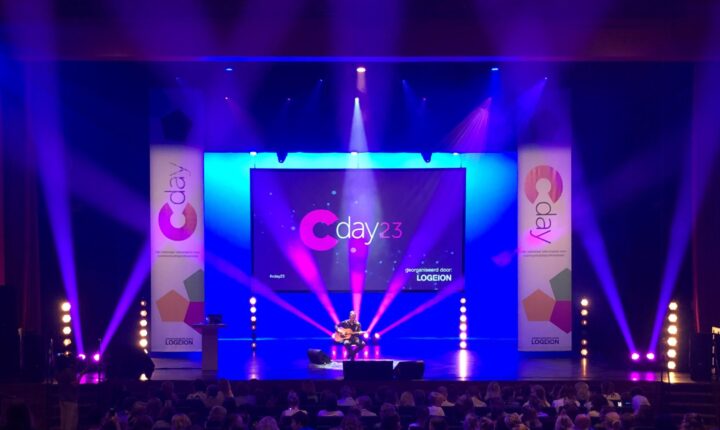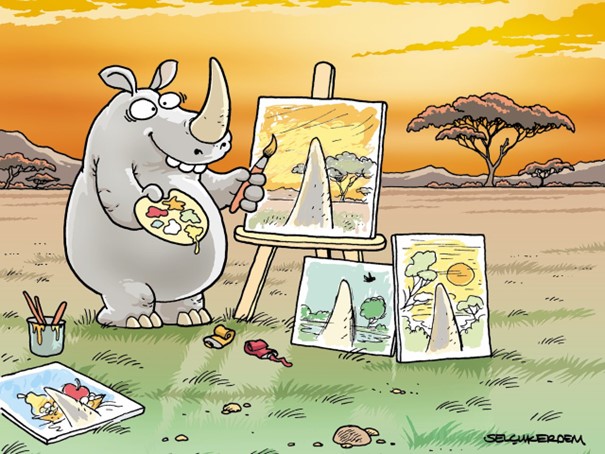
How Viva Engage drives employee engagement
Many companies have already begun transitioning from Yammer to Microsoft’s new internal social networking platform Viva Engage. What is it about and how is it changing the way colleagues collaborate?
July 18, 2023

July 18, 2023

There is so much innovation and change happening in the field of marketing communications that it can be a bit overwhelming. In addition to always having to keep up with a wide range of channels and stakeholders as a communications professional, you also need to get to grips with new technology, such as generative AI, and embrace important hot topics, such as ESG (Environment, Social and Governance). But above all: you need to get other people on board with these developments. How do you achieve it?
Innovation and change is ultimately a people business. And that means finding, making and keeping the connection. This may seem a bit challenging with digital or hybrid, but even if all you see is your conversation partner from shoulder height on Teams, that big face on your screen can tell you a lot. Alexa Kuit, nonverbal communication expert, explained more about this at C-day23 (the national trade conference for communication professionals). She says that, broadly and incredibly generalized, everyone has one or a combination of several of the four “facial language types”. This is determined by the way you move your mouth, eyebrows and eyelids and to what degree these movements may or may not be creating a connection. For example, are you action-oriented with expressive facial language? Chances are that if you sit across a conversation partner with an opposite style, you will likely communicate too much with your face, while your conversation partner needs more calm and space to let things sink in. And this can be at the expense of your connection.
So being aware of facial language can be helpful, especially in those typical Team calls. But this also applies when you are physically sitting across from each other and inhaling the smell of a cup of coffee together.
To innovate and change can come with so many actions, stakeholders and demands. Agile working may sound more relevant for IT or R&D, but it can also help with communication projects, explained agile transformation coach Mariëlle Roozemond. First of all, it makes you ask the important question: what is the real priority right now? And if you need to make choices within that as well, what is really the must-have? Secondly, your stakeholders may be in a hurry and want to see progress, so by working agile and in small sprints you can work faster towards first deliverables. Based on that, you can also make timely adjustments and take into account what is changing and happening in society at that time.
Additionally, it is inherent to the agile way of working to continuously connect with the rest of the project team. Not just one kick-off session, after which everyone goes to their own island and only meets up again a month later. No, instead, continuously connecting with each other to align actions and get everyone working in the same direction.
Okay, so technological and social developments force us to change. We engage with our stakeholders and consider how we communicate to initiate that change. Then we plan out the process in sprints, to continuously stay on top of new developments and implement feedback. This is all going in the right direction!
But, what if you run into barriers? What if some people don’t seem willing or able to change? Social psychologist Arend Ardon referred to this as ‘the undercurrent’. There seems to be something going on below the surface that causes resistance.
If you recognize this situation in your organization, there is good news. Ardon explains that this is not about “resisting” or “lingering,” but actually about protecting what is precious and about loyalty. However, by not giving it attention and just pushing on, it will likely only manifest itself even more intensely. And this dissatisfaction with not having been heard can be encountered even years later in a completely different project. So, take your time and engage in the conversation to uncover what is so precious and what loyalties cause people to resist move along.
This also means you must be aware of how you look at a situation yourself and try changing your own focus. Neuroscientist Ayca Szapora, aptly referred to a cartoon by Selçuk Erdem to illustrate this point on C-day23:

And finally, a sobering insight from Szapora: only 1% of the choices we make every day, we make consciously. So by making use of the subconscious might just bring about the change you’re after. How can you encourage this? Take of the following into account:
Just three things you yourself may need to change. Simple right?
C-day23 took place on June 22, 2023: the national trade conference for communications professionals, this year with a focus on innovation and change. Chéline Ruhof-de Vries, Senior Account Lead and Head of Social, Digital & Innovation, attended and shares her insights and conclusions.

Many companies have already begun transitioning from Yammer to Microsoft’s new internal social networking platform Viva Engage. What is it about and how is it changing the way colleagues collaborate?

Communications is always evolving. Which social trends should you take into account in the coming year? These are six tips from six of the Omnicom PR Group NL specialists.